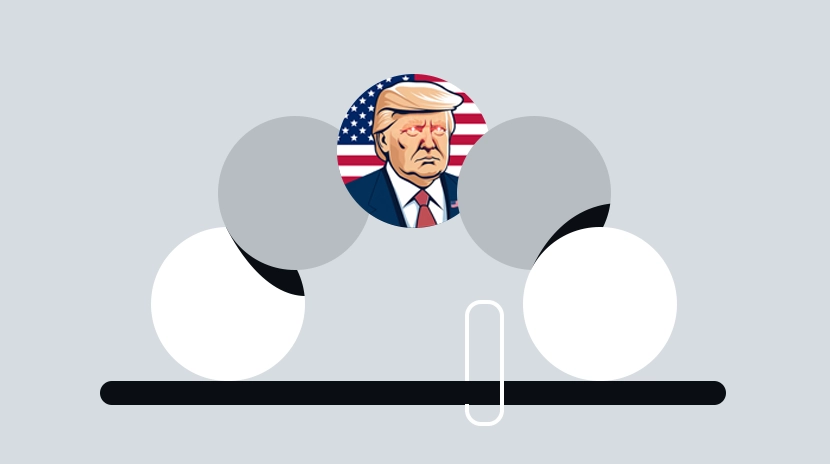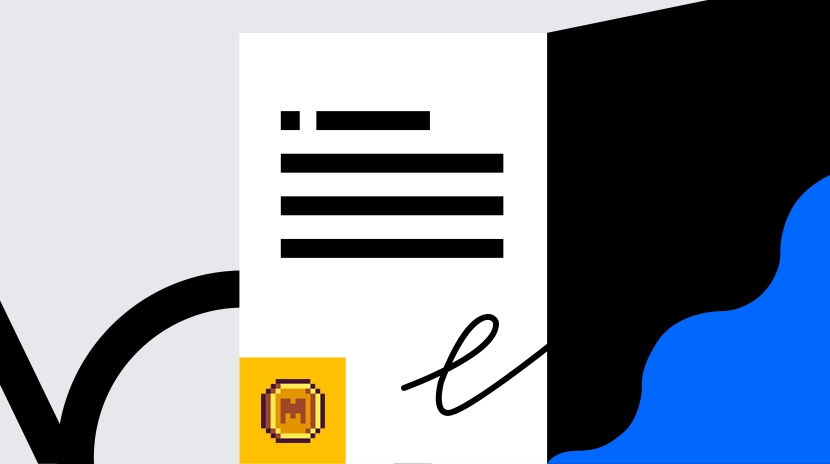L'incident LIBRA et réflexions
Introduction
Le jeton LIBRA est une crypto-monnaie que le président argentin Javier Milei a annoncée sur la blockchain Solana le 15 février 2025. Initialement, LIBRA était décrit comme un projet privé visant à stimuler l'économie argentine en finançant les petites et moyennes entreprises et les start-ups. Avec l'approbation du président Milei, la valeur marchande de LIBRA a rapidement grimpé à environ 4,6 milliards de dollars. Cependant, en seulement trois heures, sa valeur a chuté à 150 millions de dollars. Cette fluctuation de prix extrême a soulevé des inquiétudes quant à la stabilité et à la légitimité du jeton LIBRA, suscitant des soupçons d'activités frauduleuses.
Contexte de l'incident
Le président argentin Javier Milei a causé un trouble important sur le marché des cryptomonnaies avec un tweet promouvant la crypto-monnaie mème LIBRA. La capitalisation boursière du jeton a grimpé en flèche à 4,6 milliards de dollars en trois heures avant de s'effondrer de 97 %, entraînant des allégations de délit d'initié et un schéma de "rug pull". Cela a entraîné une enquête fédérale, une crise politique et le risque d'une destitution potentielle.
Examen de l'incident
À 6h00 du matin le 15 février, la crypto-monnaie meme LIBRA a été lancée sur la blockchain Solana. Le président Milei a tweeté pour promouvoir LIBRA et son projet associé, "Viva La Libertad", affirmant que l'initiative stimulerait la croissance économique de l'Argentine en finançant les petites entreprises et les projets locaux. Il a également inclus l'adresse du contrat du jeton. Peu de temps après, le compte Instagram de Milei a publié une capture d'écran du même tweet, éliminant les préoccupations concernant une publication piratée et intensifiant davantage l'attention du marché sur le lancement du jeton LIBRA. Le protocole KIP a déclaré qu'il était le développeur du projet "Viva La Libertad".

Dans la première heure du lancement, plus de 44 000 adresses de portefeuille ont acheté le jeton, ce qui a fait bondir la capitalisation boursière de LIBRA à 4,6 milliards de dollars. Cependant, vers 11 heures du matin, environ trois heures plus tard, le prix du jeton s'est effondré de 97 %, effaçant près de 4,4 milliards de dollars de valeur marchande et tombant à 150 millions de dollars. Les données on-chain ont révélé que les initiés ont encaissé environ 100 millions de dollars.
Suite à l'effondrement des prix, Milei a supprimé son tweet promotionnel sur LIBRA, affirmant qu'il était "inconscient des détails du projet" et accusant l'opposition d'être des "rats sales". Pendant ce temps, les données on-chain ont indiqué que huit portefeuilles liés à l'équipe LIBRA ont manipulé la liquidité du jeton, réalisant collectivement plus de 107 millions de dollars de profit. De plus, certains traders privilégiés s'étaient positionnés avant le tweet du président, achetant rapidement au plus bas et vendant au pic, réalisant au moins 20,18 millions de dollars de bénéfices. Ces conclusions suggéraient que la montée en flèche spectaculaire de LIBRA et sa chute n'étaient pas accidentelles mais plutôt un schéma prémédité de prise de profit. En conséquence, un grand nombre d'investisseurs ayant subi des pertes ont dirigé leur colère contre le développeur du projet, KIP Protocol.
Alors que l'incident continuait de s'aggraver, dans les premières heures du 16 février, Julian, le co-fondateur et PDG de KIP Protocol, a répondu aux préoccupations du marché en tentant de clarifier leur rôle et le flux de fonds dans l'incident du jeton LIBRA. Julian a souligné que KIP Protocol n'était qu'un facilitateur dans l'allocation des fonds pour le projet LIBRA, responsable de la distribution des fonds aux entreprises argentines, plutôt que l'émetteur ou le teneur de marché du jeton LIBRA. Il a nié que KIP Protocol avait profité du jeton LIBRA et a déclaré que les fonds du projet restaient traçables on-chain, affirmant qu'ils n'avaient pas éludé leur responsabilité.
Peu de temps après, le compte officiel du protocole KIP a publié une autre déclaration, clarifiant davantage que l'émetteur réel et le teneur de marché du jeton LIBRA était Kelsier Ventures, nommant son fondateur, Hayden Davis, comme la partie responsable. Le protocole KIP a affirmé que l'émission et la création de marché du jeton LIBRA étaient entièrement gérées par Kelsier Ventures, soulignant que les portefeuilles associés aux bénéfices n'avaient aucun lien avec le protocole KIP ou son co-fondateur Julian. Le protocole KIP a expliqué qu'ils n'avaient été invités à participer qu'après l'émission du jeton, principalement pour gérer et superviser la sélection de projets technologiques pour le financement et fournir un soutien d'infrastructure technique pour les initiatives en intelligence artificielle.
Vers 8h00 environ le 16 février, le compte officiel de Kelsier Ventures a publié une déclaration vidéo enregistrée par Hayden Davis. Dans la déclaration, Davis a admis être conseiller du président argentin Milei et a reconnu que le projet LIBRA avait dérapé. Il a révélé que l'équipe de Milei avait promis à Kelsier un soutien continu lors de l'émission du jeton LIBRA, mais le président Milei a unilatéralement supprimé le tweet promotionnel sans préavis à Kelsier en tant que partenaire. Cette action a laissé les traders de jetons LIBRA se sentir trahis et a directement déclenché la vente panique subséquente sur le marché, entraînant l'effondrement dramatique du prix du jeton.
Davis a également défendu l’équipe de KIP et son cofondateur Julian, insistant sur le fait qu’ils n’avaient commis aucune faute dans l’incident. Il a émis l’hypothèse que l’équipe du président Milei tentait de rejeter la faute sur KIP et Julian pour échapper à leur propre responsabilité. Pour compenser les pertes, Davis s’est engagé à faire tout son possible pour récupérer tous les fonds liés au jeton LIBRA, y compris les bénéfices et les liquidités, et à réinjecter tous les fonds récupérés dans les paires de trading de jetons LIBRA dans les prochaines 48 heures. De plus, Davis a exposé un « scandale potentiel » plus large dans sa déclaration, alléguant que plusieurs projets – dont Photon, Bullex, Meteora, Jupiter et Moonshot – avaient profité de la flambée et de l’effondrement des prix de la LIBRA.
Clarifications ultérieures
Moonshot a ensuite publié une clarification, indiquant que le jeton LIBRA n'avait jamais fait l'objet d'une certification formelle sur sa plateforme. La fonctionnalité pertinente était simplement un outil permettant aux utilisateurs de rechercher des informations sur le jeton via des requêtes de contrat et n'impliquait aucune approbation du projet par la plateforme. Cette approche était essentiellement une tactique trompeuse conçue pour exploiter le trafic et la réputation de la plateforme afin d'attirer des investisseurs et de créer une illusion de crédibilité pour le projet.
Pendant le processus d'émission de jetons, l'équipe LIBRA a utilisé une stratégie trompeuse en profitant de la fonction d'enregistrement de jetons récemment introduite par Moonshot. En entrant simplement l'adresse du contrat du jeton LIBRA, ils ont pu afficher les informations sur le jeton sur la plateforme. Cela a donné l'impression fausse que le jeton avait passé l'examen de la plateforme, alors qu'en réalité, il n'avait jamais reçu de certification officielle. Bien que la plateforme ait clairement indiqué les risques associés, ces avertissements ont été facilement négligés par les investisseurs impatients.

Meteora a également publié une déclaration se dissociant du projet de jeton LIBRA. Dans sa déclaration, Meteora a souligné que son équipe n'avait aucun rôle dans le déploiement, la création de marché ou le timing de lancement du jeton LIBRA. Ils ont expliqué que l'équipe LIBRA avait simplement utilisé la plateforme sans permission de Meteora, et que Meteora n'avait jamais eu de contact direct avec le jeton ou le président Milei lui-même.
Cependant, les internautes ont rapidement découvert que le compte officiel de Meteora avait précédemment commenté une photo de Davis et du président Milei, écrivant : « Voilà à quoi ressemble le changement du monde. » Ce commentaire a conduit de nombreuses personnes à soupçonner que Meteora n'était pas aussi neutre qu'il le prétendait et qu'il aurait, au moins initialement, envisagé voire participé au projet LIBRA avec une position positive.

Réflexions sur l'incident
L'incident du jeton LIBRA argentin n'était pas seulement une farce financière alimentée par une approbation politique, mais aussi un microcosme du désordre plus large sur le marché des cryptomonnaies. Cet événement a mis en lumière des risques systémiques profondément enracinés dans l'industrie et a suscité des discussions profondes sur la relation entre la technologie, le pouvoir et le capital. Cependant, tout en critiquant son impact négatif, il est également essentiel d'évaluer objectivement la valeur potentielle de la technologie des cryptomonnaies pour l'inclusion financière. Si elle est correctement réglementée, cet outil technologique neutre pourrait offrir aux nations financièrement fragiles comme l'Argentine un nouveau chemin pour le développement.
Le mariage dangereux des endorsements politiques et de la spéculation financière
Le tweet du président Milei a tiré parti de la crédibilité nationale pour approuver le jeton LIBRA, déclenchant instantanément la frénésie du marché. Cependant, son manque de surveillance (ou son imprécision délibérée) concernant les détails du projet a directement conduit à un effondrement de la confiance. Lorsque des personnalités politiques usent de leur influence personnelle pour s’immiscer dans les marchés financiers, elles privatisent essentiellement le pouvoir public. À partir du moment où « l’approbation présidentielle » devient un outil de marketing, la frontière entre la recherche de rente politique et la fraude financière est complètement floue.
L'illusion de la neutralité technologique
Les échanges basés sur la blockchain (comme Meteora) et les plateformes de liquidité (comme Jupiter) prétendent respecter la "neutralité technologique", cependant leur implication précoce dans l'incident LIBRA soulève des questions sur la véritable impartialité et sur la définition de la responsabilité de la plateforme. Ces plateformes étaient conscientes que les règles de cotation des jetons pouvaient être exploitées, mais elles ont utilisé un "accès sans permission" comme excuse pour éviter la responsabilité. La "neutralité technologique" pourrait être devenue un bouclier pour éviter d'être tenu pour responsable. De plus, la révélation de Hayden Davis sur de multiples projets ayant profité des fluctuations de prix de LIBRA suggère la possibilité d'alliances d'intérêts cachés au sein de l'écosystème Solana. Derrière la façade de la neutralité technologique pourrait se cacher une collusion secrète entre le capital et les influenceurs du marché.
Cela dit, il est indéniable que cette ouverture apporte également une inclusion financière que la finance traditionnelle peine à atteindre. Tout développeur dans le monde peut déployer des contrats financiers à coût minimal, et les petites et moyennes entreprises (PME) pourraient, en théorie, accéder à un capital international grâce à la tokenisation - précisément la vision que LIBRA a initialement promise. La technologie elle-même n'est ni bonne ni mauvaise ; la clé réside dans les contraintes éthiques de ses utilisateurs et dans les cadres réglementaires qui la régissent.
La "Loi de la jungle" dans un vide réglementaire
Dans cet incident, les traders internes ont encaissé plus de 100 millions de dollars, mais personne n'a eu à faire face à des conséquences légales, mettant en évidence le manque de réglementation efficace sur le marché des crypto-monnaies. Les équipes de projet, les échanges et les investisseurs sont dispersés dans différents pays, ce qui rend difficile pour les cadres réglementaires financiers traditionnels de fournir une surveillance. Bien que les enregistrements de transaction soient publiquement transparents, les véritables identités derrière les adresses de portefeuille restent difficiles à tracer, ce qui entraîne des risques juridiques minimes pour les acteurs malveillants. Cet environnement offre un terrain fertile pour les escroqueries "rug pull" et renforce l'idée que le marché des crypto-monnaies, en l'absence de coordination réglementaire mondiale, reste une "frontière sans loi".
Avantages potentiels
Malgré l'incident LIBRA exposant les risques spéculatifs et frauduleux du marché des cryptomonnaies, il est important de ne pas négliger le potentiel transformateur de la technologie blockchain dans le remodelage de l'infrastructure financière. Dans des pays comme l'Argentine, où les taux d'inflation annuels dépassent 100 %, les cryptomonnaies offrent aux citoyens ordinaires un outil pour se prémunir contre la dépréciation de la monnaie fiduciaire. Avec des portefeuilles décentralisés, les travailleurs peuvent recevoir des transferts transfrontaliers directement, en contournant les frais bancaires traditionnels et les retards.
De plus, la technologie blockchain permet théoriquement une adéquation précise entre les capitaux mondiaux et les besoins financiers locaux. Imaginez une plateforme de collecte de fonds tokenisée conforme : les startups argentines pourraient émettre des produits et des tokens connexes pour attirer directement des investisseurs d’autres pays, tandis que les contrats intelligents pourraient distribuer automatiquement les rendements des actions. S’il est mis en œuvre dans un cadre réglementé, un tel modèle pourrait briser le monopole géographique du capital-risque traditionnel, une vision que la Balance a promise mais n’a pas concrétisée. De plus, le registre transparent de la blockchain, lorsqu’il est associé à des mécanismes réglementaires, pourrait réduire considérablement les risques de corruption et de détournement de fonds, ce qui contraste fortement avec le délit d’initié opaque observé dans l’incident LIBRA.
Perspectives futures
Cet incident confirme une fois de plus la nature hautement spéculative des jetons mème, qui manquent de support de valeur fondamentale et sont facilement manipulés par le sentiment du marché et un petit groupe d'initiés. Les investisseurs particuliers sont particulièrement vulnérables aux stratégies de type "pump-and-dump". Cependant, la contradiction plus profonde réside dans le fait que les cryptomonnaies, qui visent à construire un système financier "sans confiance", dépendent toujours d'approbations centralisées (comme le soutien d'un président) pour gagner en légitimité sur le marché. Lorsque l'idéalisme technologique entre en collision avec la cupidité humaine et la recherche de rentes politiques, la promesse de démocratisation financière devient une illusion. Le véritable tournant pour l'avenir pourrait résider dans l'établissement d'un système plus robuste et complet.
Établissement d'un cadre réglementaire complet
Les pays pourraient s'inspirer du modèle du Groupe d'action financière (GAFI) pour établir un mécanisme réglementaire coordonné à l'échelle mondiale pour les crypto-monnaies. Par exemple, un cadre de divulgation standardisé pourrait être mis en place pour les jetons politiquement approuvés, exigeant des équipes de projet qu'elles divulguent publiquement les véritables identités des membres de l'équipe, les plans d'allocation des fonds et les règles de verrouillage de la liquidité.
Élaboration de normes éthiques pour la technologie
Les bourses et les plateformes de liquidité (comme Jupiter et Meteora) doivent être des gardiens de Gate.io, mettant en œuvre des périodes de refroidissement pour les jetons soutenus par des personnalités politiques de premier plan afin de prévenir les bulles spéculatives instantanées. De plus, de grosses ventes pourraient déclencher des disjoncteurs, interrompant les swings de prix extrêmes. Des blockchains haute performance comme Solana pourraient introduire des "modules de récupération", permettant à la communauté de voter pour geler les contrats de jetons frauduleux en tant que mesure d'urgence.
Développer un système de réputation On-Chain
Un système de notation de crédit et d'identité décentralisé (DID) pourrait être créé en exploitant des preuves à divulgation nulle de connaissance. Lorsqu'un président promeut un jeton, son profil de réputation sur chaîne pourrait afficher automatiquement les taux de réussite des projets historiques, les dossiers de conformité passés et la légitimité de l'équipe, aidant les investisseurs à identifier les éventuels "pièges d'approbation".
Conclusion
L'incident du jeton LIBRA argentin a été un spectacle perdant-perdant qui a cruellement démontré les conséquences dévastatrices lorsque le pouvoir politique, l'engouement technologique et la spéculation financière s'entremêlent. Les soutiens présidentiels, les projets méticuleusement emballés et l'illusion de la création de richesse sur la blockchain sont finalement devenus des outils d'exploitation du capital, anéantissant instantanément la richesse des investisseurs et endommageant gravement la crédibilité de l'industrie. L'industrie peut évoluer vers un écosystème plus sain, plus rationnel et plus durable en affrontant ces problèmes de front, en s'engageant dans une profonde réflexion et en coordonnant les efforts en matière de réglementation, de responsabilité des plateformes et d'éducation des investisseurs.
Articles Connexes

Top 10 Plateformes de trading de jetons MEME

Qu'est-ce que Moonshot ? Tout ce que vous devez savoir sur Moonshot

Qu'est-ce que Fartcoin? Tout ce que vous devez savoir sur FARTCOIN

Revue des dix meilleurs Bots de mèmes

Un Aperçu Complet des Pièces Meme Trump
